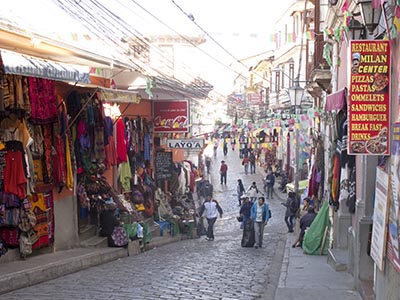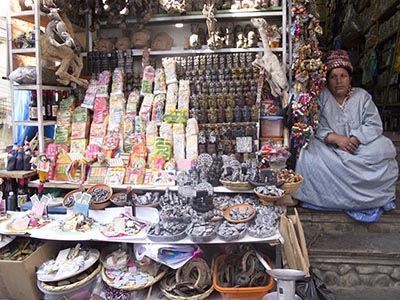Vagabonding Field Report: Living the high life in La Paz
What’s the strangest thing you’ve seen lately?
Hundreds of llama foetuses at the witches market in the centre of La Paz. People buy them and bury them under their porches to bring luck and prosperity to their families. It wasn’t the most pleasing sight for a vegetarian, although I’m told most have died naturally.
Describe an interesting conversation you had with a local:
We couchsurfed for a couple of days in one of the more wealthy areas of La Paz and went to a house party with our host. It was fascinating to see a side of La Paz away from the touristic centre. We met a man who is creating La Paz’s first raw food restaurant, another who, after being expelled five times, now runs his own alternative after-school learning club. We also talked with the captain of the ultimate frisbee team who is trying to popularise the sport in Bolivia. After training in the dizzying heights of La Paz, his team will be at an advantage on lower ground.
What do you like about where you are? Dislike?
La Paz is the most dramatically situated city I have ever seen, built into the side of a mountainous valley, and surrounded by snow-capped mountains. Sheer mountain face punctuates the precariously positioned houses and, if you venture further afield, you can explore the otherworldly landscape of the Luna Valley. This was enough to make me love the city but if I could change one thing, it would be the altitude. I found it deeply uncomfortable never being able to get on top of my breath, and it made exploring the city very tiring.
Describe a challenge you faced:
 The altitude was the biggest challenge we faced. At one point I had to see a doctor and I was starting to get a pain in my chest, which the powers of Google told me was a bad sign. It turned out it was nothing to worry about, but it was scary at the time. I think it’s good to take these things seriously, just in case they are, but also be wary of scaring yourself with self-diagnosis.
The altitude was the biggest challenge we faced. At one point I had to see a doctor and I was starting to get a pain in my chest, which the powers of Google told me was a bad sign. It turned out it was nothing to worry about, but it was scary at the time. I think it’s good to take these things seriously, just in case they are, but also be wary of scaring yourself with self-diagnosis.
What new lesson did you learn?
I learned that the traditional bowler hats you see Bolivian women wearing originate in the UK where they were worn by railway workers. However, I’m not sure how the craze caught on, and stuck, for Bolivia’s women. The hats are often worn as a sign of social status, some costing much more than a monthly salary.
Where next?
Next up is Ecuador, followed by a month-long teacher training course in Mexico.
Read more about our travels on our blog Bridges and Balloons.


Category: South America, Vagabonding Field Reports